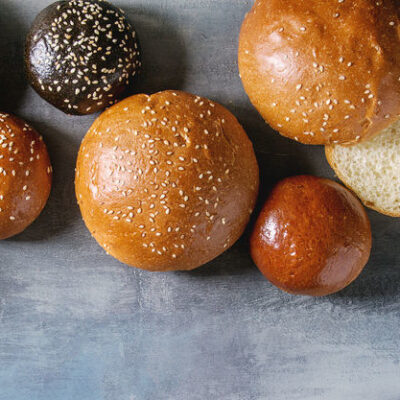Similar to egg-based washes, egg wash substitutes can be topically applied to fresh, par-baked or frozen bakery products for a crunchy-glazed crust. They can be also sprayed to coat the product after baking and before the product cools down.
Why replace eggs in egg wash?
Eggs and egg-based materials present food formulators and bakers with several challenges such as:
- Availability and fluctuating prices: Eggs are the most expensive ingredient in bakeries, and there are frequent shortages in the supply
- Quality and short shelf life
- Enhanced functionality: Some egg alternatives provide better functionality and sensory properties than eggs in bakery products
- Sustainability: Many bakeries and food manufacturers are implementing self-imposed sustainability program to appeal to younger consumers
- Safety: Salmonella outbreaks, avian flu disease.
- Allergens: Require segregating ingredients in production and warehousing areas
- Nutrition and health: Eggs contain significant levels of cholesterol unlike plant-based ingredients, which are cholesterol-free
- Lifestyle: Eggs are not compatible with vegans and vegetarian diets
- Cross-contamination: Requires special handling and storage in bakeries
Function
Eggs are an important component of bakery products surface treatment. Their unique composition, mainly the presence of the natural emulsifiers and proteins, help with stabilizing the crust texture. Also, they provide color and visual appeal.
Typically whole eggs, yolk, or egg white mixed with water or milk can be used in egg wash with the yolk providing darker finish. During baking, egg proteins unfold and cross-link which squeezes out moisture to form a smooth web surface.
Applications
The first step in choosing the right egg wash substitute is deciding on the desired functionality:1,2,3
- Surface browner: When used to finish the surface of a bakery product, the mixture is brushed on prior to baking, usually an item with a crust such as pies, bread rolls, breads, Cornish pasties, empanadas, etc.
- Binder: When used as a binder, an egg wash can help the coating of food being dredged to stick on better. pies or bread with decoratives. Salt in an egg wash helps break down the protein in the eggs, helping crumb coatings, etc, stick better to the wash. Ground spices such as cinnamon or nutmeg adds surface flavoring and a bit of coloring. Here oils, butter and other lipid-based EWR will be too slippery to keep seeds, nuts, etc. to stick.
- Sealer: An egg wash can also “seal” the surface of a food item against moisture from the anticipated filling.
Ingredients used in egg wash substitutes and their properties:
| Egg wash substitute (EWS) | Impact on baked goods |
| Proteins, milk, soy |
|
| Oil |
|
| Milk or cream |
|
| Polysaccharides (Starch, Xanthan Gum, Alginates) |
|
| Melted butter |
|
| Rice milk, almond milk, soy milk |
|
| Flaxseed (dispersed in water) |
|
| Custard powder dissolved in water |
|
| Malt syrup, molasses |
|
| Honey or maple syrup |
|
| Coloring agents (caramel, lycopene, annatto, turmeric, and paprika extracts) |
|
FDA regulation
All ingredients used as egg wash substitute should comply with FDA regulations.
References
- Julianti, E., Rusmarilin, H., Ridwansyah, H. and Yusraini, E. Effect of gluten free composite flour and egg replacer on physicochemical and sensory properties of cakes. Int. Food Res. J. 2016, 23, 6, pp: 2413-2418.
- Wu, J. Eggs and Egg Products Processing, In Food processing: Principles and Applications, Second edition. S. Clark, S. Jung and B. Lamsai (Eds.). 2014, J. Wiley, pp: 437-455.
- Kohrs, D., Herald, T.J., Aramouni, F.M. and Abughoush, M. Evaluation of egg replacers in a yellow cake system. Emir. J. Food Agric. 2010, 22, 5, pp: 340-352

